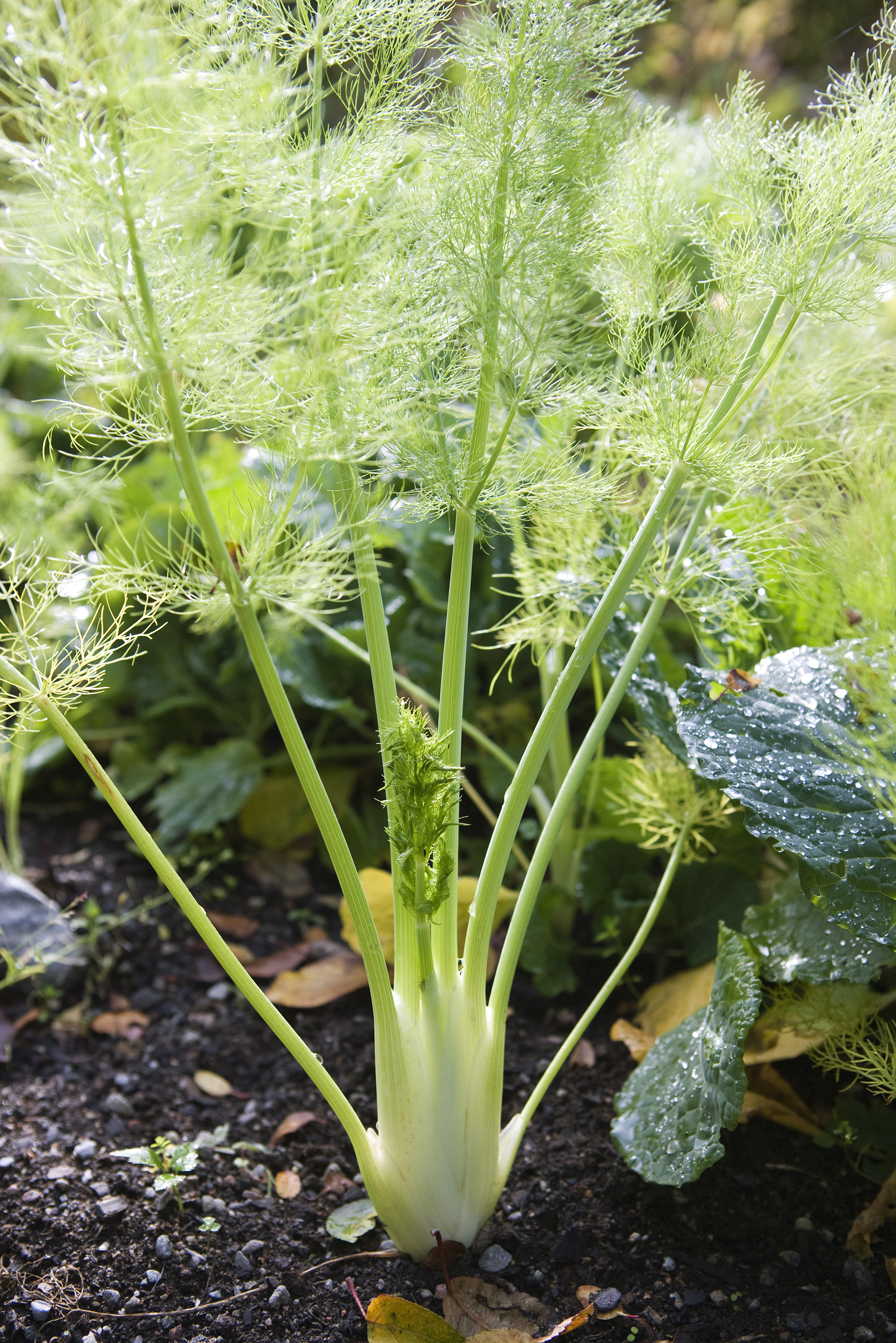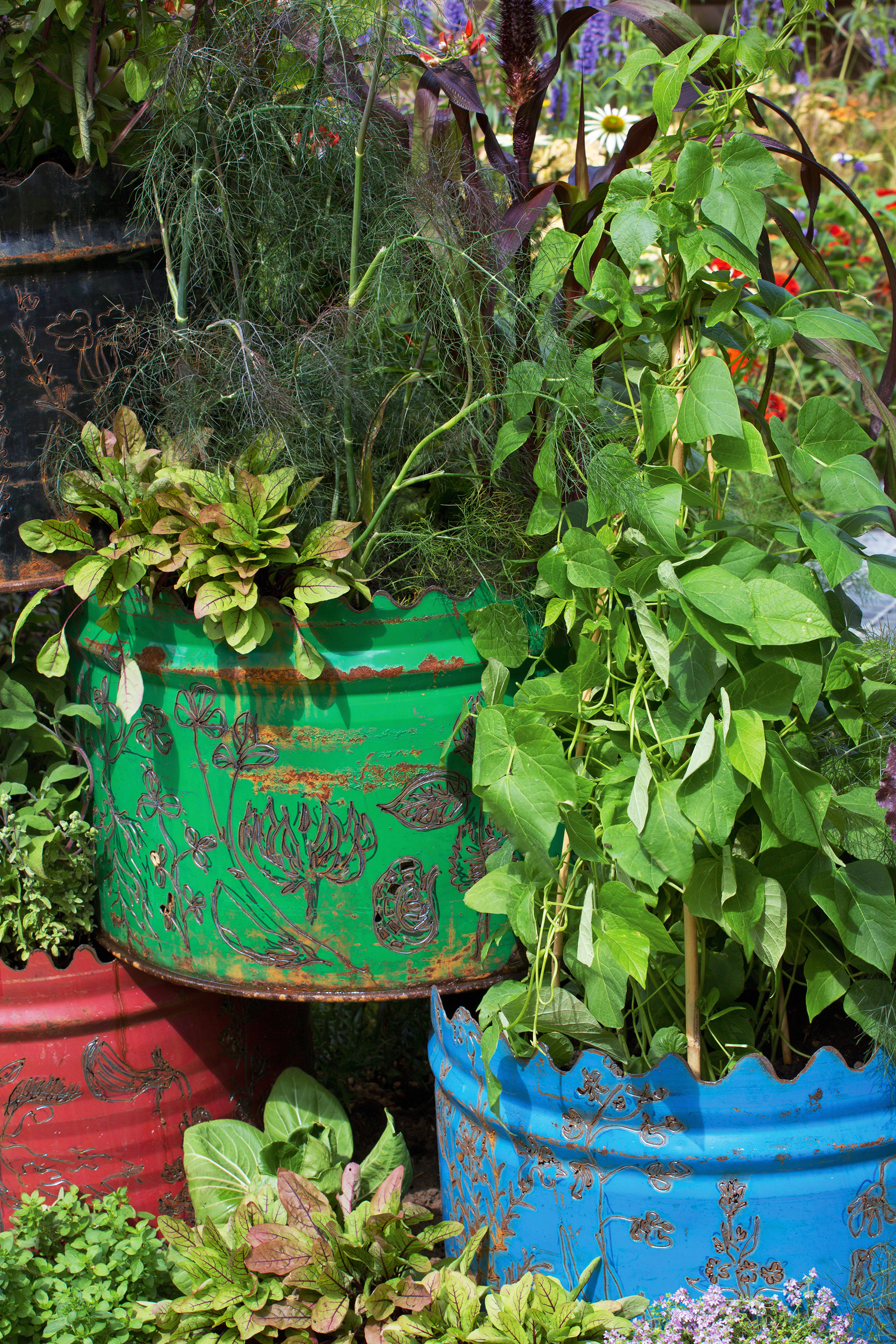How to grow fennel – as a herb or vegetable
Discover how to grow fennel in all its delicious forms, for a most versatile crop that's ready in just 12 weeks


Learn how to grow fennel for an all-round culinary staple that you can harvest from spring through fall. Not only do fennel's aniseed notes add a delicious, aromatic flavor to food, but the plant also has medicinal properties, in particular aiding digestion.
There are two main types of fennel – the traditional herb variety, with feathery green or bronze foliage that is harvested as needed, and the closely related bulb (Florence) fennel, which is harvested in its entirety. Both are worth including in your list of kitchen garden ideas as they will enhance so many dishes, from fish and vegetables to curries, soups and sauces.
‘Fennel is considered both a vegetable and a herb. It is not difficult to grow and is a popular addition to organic gardens because it attracts ladybugs, which are natural predators of some of the most insidious pests,’ says Period Living's gardening expert Leigh Clapp.
‘Fennel serves a dual purpose in a kitchen garden as it adds scent and texture, and also looks lovely as an airy infill in a cut bouquet.’

How to grow fennel as a herb
The herb fennel is a perennial plant that's best grown from seed. The seedlings do not like to be transplanted, so ideally sow directly where the plants will grow. Choose a site with plenty of sun and free-draining soil.
Do not plant fennel close to dill, as the herbs will cross-pollinate, which has a negative impact on flavor.
- First – when to plant fennel? ‘Sow seeds as soon as the soil can be worked early in the season,’ says Clapp. In the northern hemisphere, that is likely to be early to mid spring, in March or April. ‘Incorporate plenty of organic matter into the soil.’
- Create rows or drills around half an inch deep and 15in apart. Sow seeds thinly and cover with soil.
- Water the soil and keep moist but do not excessively soak it. Germination should take 1-2 weeks.
- When the seedlings have grown large enough to handle, thin them out to around 12in apart.
- Succession sow every few weeks until late summer for a continual supply of fennel.
- Once the plants are established, fennel does not require a lot of attention – water only as needed, and particularly in hot weather, and fertilize occasionally.
- Remove dead stems at the end of the growing season.
- Though fennel is a perennial herb, it will need replacing after 3-4 years.

How to grow fennel bulb
Fennel is one of those vegetable garden ideas that takes a little work and attention but is more than worth the effort.
Design expertise in your inbox – from inspiring decorating ideas and beautiful celebrity homes to practical gardening advice and shopping round-ups.
Fennel bulbs – also known as Florence fennel – are not quite as easy to grow as herb fennel, but they are well worth the effort as they can be eaten raw or cooked, and are a staple of Italian cuisine. ‘Even experienced gardeners find Florence fennel a challenge,’ says gardening expert Matt James.
The issue with fennel bulbs is they they are prone to bolting, meaning the plant will flower and go to seed too quickly. To prevent fennel bulbs from bolting, choose a bolt-resistant variety, avoid sowing seed too early or transplanting the seedlings, and keep the soil moist.
Aside from taking precautions against bolting, fennel bulbs are straightforward to grow.
- Sow seed directly where you want the plants to grow, in mid to late spring.
- If you want to start fennel earlier indoors, then sow only one seed per small pot or module and take care to transplant the contents of each pot in its entirety, to avoid disturbing the roots.
- Plant seeds around half an inch deep in rows set around 15 inches apart. Sow seeds thinly and cover with soil.
- When the seedlings are large enough to handle, thin them out to 12 inches apart.
- Keep the soil moist throughout the growing season, to minimize the risk of bolting.
- Though not essential, you can earth up the bulbs as they grow, which will blanche them and protect them from late-season frosts.
- Feed the plants every two weeks with a high potash feed.
- You can harvest the bulbs from late summer through fall.

Which type of fennel?
When it comes to selecting a type of fennel, you can choose from the herb or bulb variety – both share a sweet aniseed flavor.
Common fennel is widely available as a herb, but bronze fennel is well worth adding to your herb garden. As its name suggests, it has striking bronze foliage. ‘Bronze fennel is a stunning back-of-the-border favourite,’ says James.
For bulb or Florence fennel, try Perfection, Zefa Fino, Sirio, Romanesco, and Dragon.

How to grow fennel in pots
Growing fennel in pots is a great idea for a vegetable container garden. The plants' feathery leaves make a striking feature, and you can keep them close to hand on the patio.
Sow the seed directly into a container filled with free-draining potting mix.
'Fennel will need a reasonable amount of space to grow if it is to develop a decent-size bulb – I have three growing in a 12-inch pot – but if you find you have overplanted, you can always eat the thinnings too,' says Aaron Bertelsen in Grow Fruit and Vegetables in Pots.
'If you are interplanting with another crop – say, lettuces – make sure you leave enough space for the fennel to grow without being smothered. And be careful not to accidentally weed it out. Daily watering is vital too.'

How to harvest fennel
Every part of a fennel plant is edible, from the frothy fronds to the earthy roots, which are great roasted or cooked into dishes. Fennel seeds are particularly aromatic and can be used in cooking and even infused for tea.
Fennel can be harvested within around three months of sowing. For the herb variety, simply cut off the foliage as desired.
To harvest bulb fennel, cut the bulb above the soil. If you leave the root in the ground, it may regrow for a second, smaller harvest.
To gather the seeds, you will need to leave some flowers on the plant so that seeds will start to form. You can eat them green, fresh from the plant, but they are best dried.
To dry the seeds, wait until they have turned pale brown, then hang the stems upside down to dry in a paper bag. Once the seeds are totally dry, store them in an airtight jar.
Fennel pests and problems
The biggest problem with fennel is usually bolting, although this is more of an issue with the bulb or Florence varieties. You can take steps to avoid this, including keeping the plants moist and not transplanting them. However, choosing a bolt-resistant variety is the best way to minimize risk.
When the plants are small, slugs and snails can be an issue, so protect them with barriers or biological controls.
Aphids can also cause issues – keep them at bay by making a spray with water and a weak concentration of dish soap.
How long does it take to grow fennel?
To grow fennel bulbs takes around 3 months from sowing until the plant is ready to harvest, depending on the variety.
When growing fennel as a herb, you can also begin to harvest the foliage within around 3 months from sowing.
Does fennel come back every year?
The herb fennel is a short-lived perennial, so will come back each year. However, the plants will only last 3-4 years before you need to replace them.
Fennel bulbs are harvested in their entirety for culinary use, so are grown as annuals.
Where does fennel grow best?
Fennel grows best in a sunny site with free-draining soil. It does not like too much shade, and will struggle if the soil is prone to becoming waterlogged.
Why is fennel a bad companion plant?
Fennel is considered a bad companion plant as it can have a negative impact on other herbs and vegetables.
'Though fennel is beautiful, edible and attracts pollinators, it needs to be planted separately or with ornamentals as it can inhibit the growth of vegetables,' says Clapp.
In particular, fennel should not be planted near dill, as the plants will cross-pollinate, causing them both to taste unpleasant.

Melanie has worked in homes and gardens media for two decades. Having previously served as Editor on Period Living magazine, and worked on Homes & Gardens, Gardening Etc, Real Homes, and Homebuilding & Renovating, she is now focusing on her passion for gardening as a Senior Editor at Gardening Know How. As a keen home grower, Melanie has experimented with pretty much every type of vegetable at some point – with mixed results. Often it is the simplest things that elude you, which may explain why she just can't seem to master zucchinis.